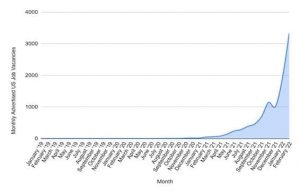Online retailing has soured over the last decade. Current sales value of eCommerce retail sales is $ 294 million and might hit $ 414 by 2018. Unfortunately, the rate of returns of online products is alarming. According to Invesp inforgraphic on online return rates statistics, at least 30% of all products ordered online are returned compared to only 8.89% bough in brick-and-mortar shops.

To make matters worse, United Parcel Service Inc. announced that the tide of goods flowing back to e-retailers normally jumps 15% during holiday seasons. According to Whiteboardmag, Some retailers experience as much as 50% return rates. US online retailers report a return rate of between 20% and 40%. This significantly eats into the profits of retailers and increases their costs.
Why are product return rates so high?
Around 65% of all returns are as a result of mistakes by the retailers. In particular,research by TrueShip showed that20% of consumers returned items because they received damaged products. 22% said they received different products from what they ordered and 23% said they received wrong item altogether. 35% of shoppers return products because of other reasons.
How convenient is your return policy?
Your return policy can make or break your ecommerce business. Statistic from eConsultancy show 56% of shoppers want hassle-free return policy. 81% of shoppers want simple, easy and free return returns. 92% of shoppers say they would buy something again if they are happy with the return policy, while 67% of shoppers say they normally check the return page before making a purchase. Moreover 62% of shoppers are more likely to make an online purchase if they can return an item.
Therefore, if you have a cumbersome return policy, you could be missing out on top-tier customers. 27% of shoppers say they would purchase an item that costs more than $ 1,000 if it offered free returns while only 10% would do so if it doesn’t offer free return policy. In other words, bad return policy leads to less sales.
While most returns are as a result of the fault of the sellers, some customers could be mischievous. According to Wall Street Journal, the fashion industry receives above average products returns because some shoppers could just order, say a dress, just to see how it fits them and return it. However, those are the minority. So merchants could significantly reduce product return rates by simply ensuring they ship the right item and ensure they use safe shipping modes that could reduce risk of damage.
Digital & Social Articles on Business 2 Community(453)








